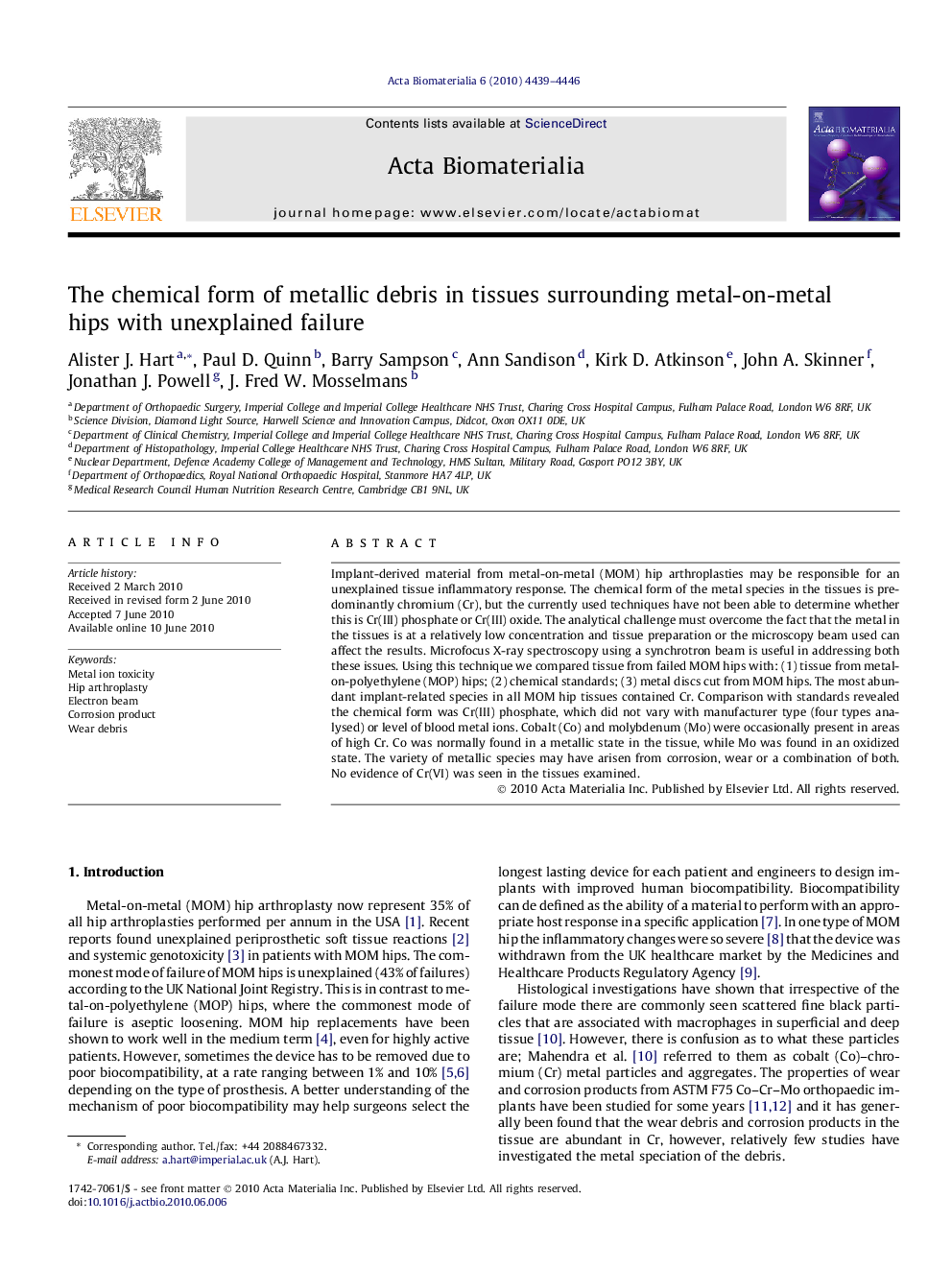| Article ID | Journal | Published Year | Pages | File Type |
|---|---|---|---|---|
| 1726 | Acta Biomaterialia | 2010 | 8 Pages |
Implant-derived material from metal-on-metal (MOM) hip arthroplasties may be responsible for an unexplained tissue inflammatory response. The chemical form of the metal species in the tissues is predominantly chromium (Cr), but the currently used techniques have not been able to determine whether this is Cr(III) phosphate or Cr(III) oxide. The analytical challenge must overcome the fact that the metal in the tissues is at a relatively low concentration and tissue preparation or the microscopy beam used can affect the results. Microfocus X-ray spectroscopy using a synchrotron beam is useful in addressing both these issues. Using this technique we compared tissue from failed MOM hips with: (1) tissue from metal-on-polyethylene (MOP) hips; (2) chemical standards; (3) metal discs cut from MOM hips. The most abundant implant-related species in all MOM hip tissues contained Cr. Comparison with standards revealed the chemical form was Cr(III) phosphate, which did not vary with manufacturer type (four types analysed) or level of blood metal ions. Cobalt (Co) and molybdenum (Mo) were occasionally present in areas of high Cr. Co was normally found in a metallic state in the tissue, while Mo was found in an oxidized state. The variety of metallic species may have arisen from corrosion, wear or a combination of both. No evidence of Cr(VI) was seen in the tissues examined.
